The 15 Types of Rabbit You Should Know
This page contains affiliate links. We may earn money or products from the companies mentioned in this post through our independently chosen links, which earn us a commission. Learn More
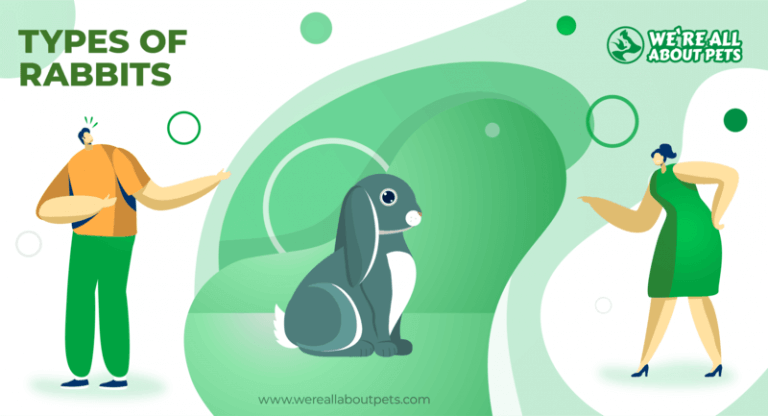
When you’re thinking about the perfect pet, what comes to mind? You may imagine traditional options like cats and dogs, but these aren’t the only choice. If you’re looking for a low maintenance pet perfect for small spaces but you long for the occasional cuddle with a furry creature, a rabbit might be for you.
Rabbits make great pets, but they are very different from what you may be used to. In addition to doing your research to learn about proper rabbit care, take the time to learn about the different rabbit breeds as well so you can make the right choice.
15 Popular Types of Rabbit Breeds
There are several hundred rabbit breeds to choose from, but not all of them make great pets. Some rabbits require a great deal of grooming, for example, and others are too large to work well in an apartment setting. Learn a little about the options before making your choice.
Here’s a quick overview of some of the most popular rabbit breeds:
1.Angora
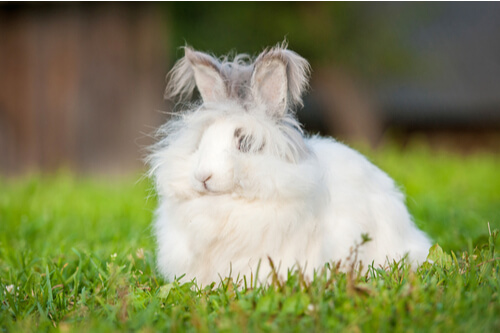
- Origin: Turkey
- Price: About $50
- Size: Various
- Fur: Long
One of the oldest domestic rabbit breeds, there are actually 11 distinct breeds of angora rabbit including the satin angora, giant angora, French angora, English angora, and more. Angora rabbits have long fur that doesn’t have the same allergy-causing qualities as many other animals.
2.English Lop
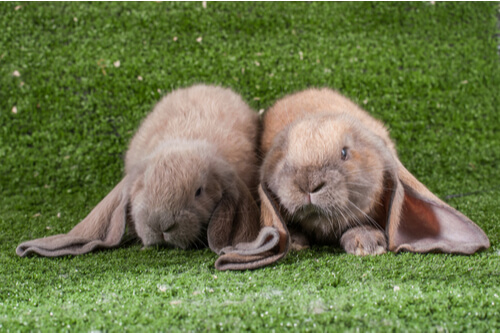
- Origin: England
- Price: $30 to $60
- Size: 10 to 11 pounds
- Fur: Short
Considered a fancy breed, the English lop was developed in England in the 19th century. The English lop rabbit is thought to be the first lop breed and may be one of the oldest domestic rabbit breeds as well. These rabbits have long, floppy ears and generally grow up to 11 pounds.
3.Holland Lop
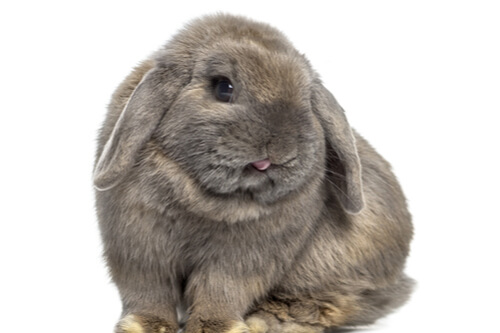
- Origin: Netherlands
- Price: $15 to $60
- Size: 2 to 4 pounds
- Fur: Medium-long
The Holland Lop is a popular show breed that originated in the Netherlands and was recognized by the ARBA in 1979. Holland Lop rabbits are a dwarf breed, so they only weigh between 2 and 4 pounds at maturity. This breed usually has a broken or solid pattern and comes in a wide variety of colors.
4.Netherland Dwarf
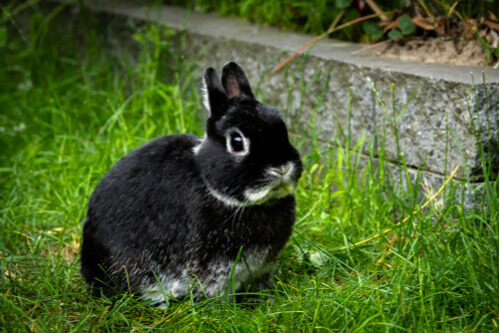
- Origin: Netherlands
- Price: $25 to $40
- Size: 1 to 2.5 pounds
- Fur: Short
One of the smallest rabbit breeds, the Netherland dwarf rabbit weighs up to 2.5 pounds. While these rabbits are ideal for adults, they are not the best choice for children because they are small and fragile. Netherland dwarfs enjoy human interaction, but they can be a little skittish and like to feel safe. These rabbits need a great deal of exercise and like to have free reign of the home for most of the day.
5.American
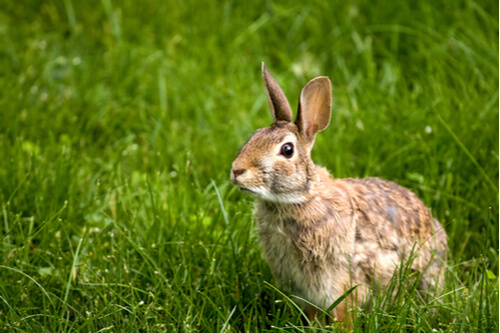
- Origin: United States
- Price: $20 to $40
- Size: 9 to 12 pounds
- Fur: Short
The American rabbit was developed for its fur but also makes a good pet due to its sweet temperament. These rabbits have a semi-arch or mandolin body type with a long loin which differs from the rounded shape commonly found in other commercial breeds like the New Zealand or Californian rabbit. American rabbits are a normal rather than a dwarf breed, growing up to 12 pounds on average.
6.Dutch
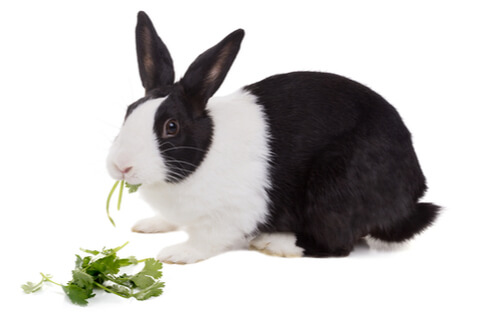
- Origin: England
- Price: $25 to $100
- Size: 4 to 5.5 pounds
- Fur: Short
Though you might assume otherwise given the name, the Dutch breed actually originated in England. These rabbits are a little larger than dwarf breeds but still only weigh up to 5.5 pounds on average. This breed is known for its unique color pattern which is distinctively black and white. These rabbits have dark ears and bottoms with white coloring on the shoulders, belly, and front legs.
7.Flemish Giant
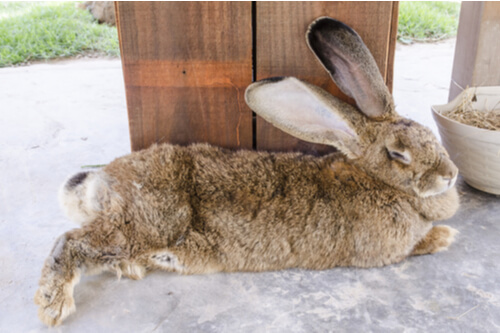
- Origin: Flanders
- Price: $20 to $50
- Size: 14 to 15 pounds
- Fur: Short
As you can guess from the name, the Flemish giant rabbit is a very large rabbit – generally considered the largest domesticated rabbit breed. Flemish giants are typically a utility breed rather than a pet, bred for fur and meat. These rabbits can take over a year and a half to achieve full maturity and grow as large as 15 pounds on average, though have been known to exceed 20 pounds.
8.Lionhead
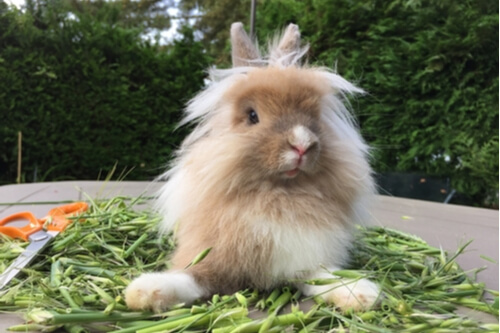
- Origin: Belgium
- Price: $20 to $50
- Size: Up to 4 pounds
- Fur: Long
The lionhead rabbit originated in Belgium from a combination of the Swiss Fox and Netherland Dwarf breed. These little rabbits weigh up to 4 pounds, but their most distinctive characteristic is their flyaway coat. A genetic mutation resulted in long fur around the head and rear, giving the rabbit the appearance of having a mane. This is where the lionhead name comes from.
9.Mini Lop
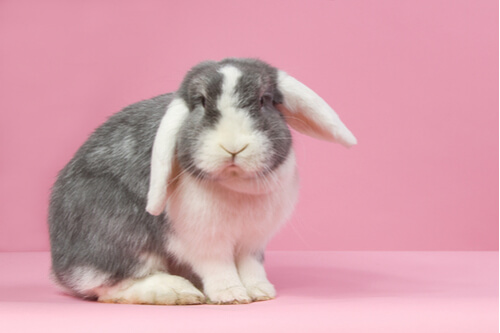
- Origin: Germany
- Price: $35 to $100
- Size: 4.5 to 6 pounds
- Fur: Short
The mini lop rabbit is another small breed and perhaps one of the most popular breeds of rabbit in the world. Mini lops grow up to 6 pounds and are known for their floppy ears and playful demeanor. These rabbits get along well with other rabbits and pets but they need plenty of mental stimulation, so they may not be the best choice for pet owners who don’t want to interact with their pet rabbit.
10.Harlequin
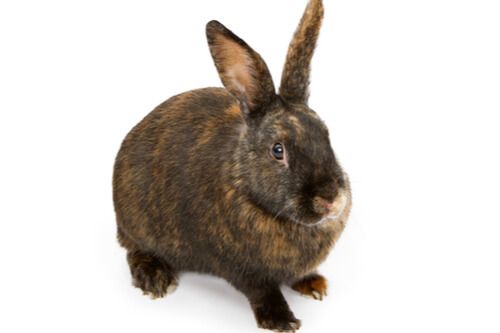
- Origin: Japan
- Price: $20 to $50
- Size: 6 to 9 pounds
- Fur: Short
Originally known as the Japanese rabbit, the Harlequin breed has a very distinctive coat pattern. These rabbits have body markings in bands, bars, or a combination of the two which come in a wide range of colors. Harlequin rabbits are a very curious and playful breed which makes them excellent family pets.
11.Belgian Hare
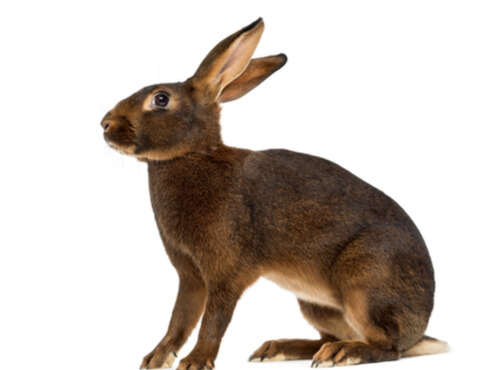
- Origin: Europe
- Price: $500 to $1,000
- Size: 8 to 9.5 pounds
- Fur: Short
Selectively bred to resemble the wild hare, the Belgian hare was developed in the Flanders area of Europe in the 18th century. This is one of the rarer rabbit breeds with prices exceeding $500 now. As high as that is, the price in 1900 was closer to $5,000.
12.Himalayan
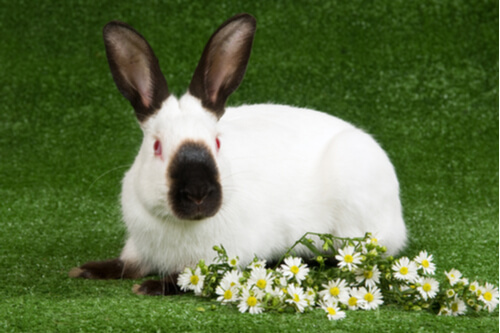
- Origin: Unknown
- Price: $15 to $30
- Size: Up to 5 pounds
- Fur: Short
Perhaps one of the oldest rabbit breeds in existence, the Himalayan rabbit has dark markings on the feet, tail, and ears with an egg-shaped marking on the nose. The rest of the rabbit is white with short, flyback fur. The breed made its first appearance in the United States in the early 1900s, but the origins are largely unknown. These rabbits are very calm and patient which makes them popular as pets.
13.Polish
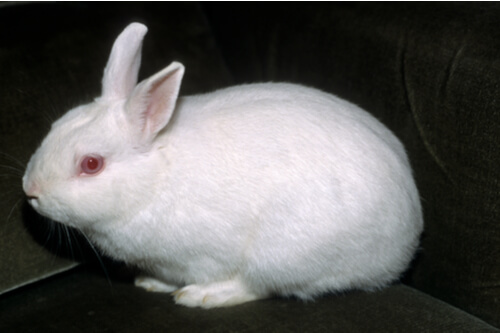
- Origin: England
- Price: $30 to $60
- Size: Up to 3.5 pounds
- Fur: Short
Despite its name, the Polish rabbit breed is thought to have originated in England. In the UK, it is known as the Polish rabbit but, in the United States, as the Britannia Petite. This rabbit breed is very small, growing up to 3.5 pounds, and has very short, soft fur with six distinct color options: ruby-eyed white, blue-eyed white, blue, black, chocolate, or broken.
14.Chinchilla
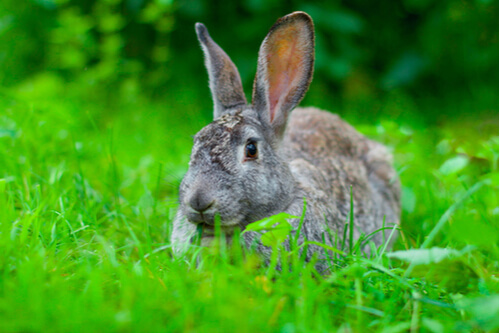
- Origin: France
- Price: $30 to $60
- Size: 7 pounds
- Fur: Short
The standard chinchilla was created by breeding wild rabbits with Beverens and Himalayans. These rabbits are medium in size with soft, short to medium-length fur in a blue-grey color. The breed became so popular that enthusiasts began to develop larger Chinchilla rabbits which led to the development of the Giant chinchilla and the American chinchilla.
15.Mini Rex
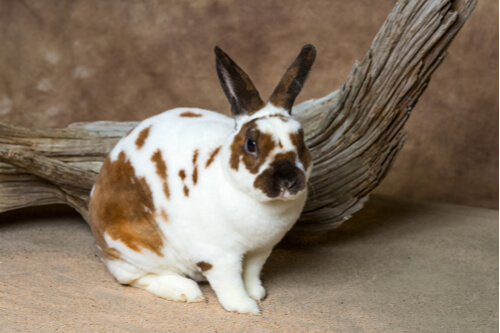
- Origin: France
- Price: $15 to $50
- Size: Up to 4.5 pounds
- Fur: Short
The mini rex rabbit originated in France in the 1800s and, as the name implies, they are a smaller rabbit that usually grows to 3.5 to 4.5 pounds in size. This breed has a recessive gene that makes the fur stick out from its body instead of lying flat and the outer coat is shorter than most rabbit breeds. This gives the mini rex rabbit a very soft, velvety feel.
These are just a few of the many popular breeds of rabbit out there. Some of the other different breeds you may come across include the following:
- American fuzzy lop
- American sable
- Checkered giant
- English spot
- French lop
- Dwarf lop
- Dwarf hotot
- French hotot
- Blanc de hotot
- Havana
- Rhinelander
- Florida white
- Jersey wooly
- Palomino
- Silver marten
- Champagne d’Argent
- Crème d’Argent
- Giant papillon
- Silver fox
- Mini satin
The Benefits of Owning a Pet Rabbits
When you think about popular pets, common options like dogs and cats probably come to mind. While dogs and cats are great, they aren’t necessarily the perfect pet for everyone. If you’re looking for a pet that can be housed indoors with limited space but will still be active and social with you and your family, a pet rabbit just might be the ideal choice to consider.
Here are some of the benefits of rabbits as pets:
- Feeding a pet rabbit is not particularly complicated. The best diet for rabbits consists primarily of fresh hay with small amounts of commercial rabbit food, supplemented with fresh foods.
- Rabbits come in a variety of sizes but are generally considered small pets, so they are a good choice for apartment life and for homes that don’t have access to outdoor space. Despite their small size, rabbits have big personalities and can be quite entertaining.
- Rabbits are not a terribly expensive pet because they can be litter trained and allowed to roam around the house – you don’t necessarily need a large enclosure or any fancy equipment. Their dietary needs are also fairly straightforward.
- Your rabbit will adapt quickly to your habits because they are naturally crepuscular – this means they are most active in the morning and evening, so they’ll be ready to visit with you in the morning and then to play with you after work.
- Compared to traditional pets like cats and dogs, rabbits are fairly low-maintenance. Your rabbit needs a simple cage or hutch to call home as well as a litter box or two, but as long as it is safe to do so you can let your rabbit have free reign of the house.
- Rabbits have longer lifespans than many small pets, but they aren’t as long a commitment as some animals. The average lifespan of a pet rabbit is 8 to 12 years.
- Depending what type of rabbit you choose, you don’t necessarily need to spend a lot of time grooming. That being said, grooming your rabbit is a great opportunity for bonding.
Rabbits make wonderful pets, but they do require a significant degree of time and attention. With regular interaction, rabbits can become very tame and you’ll find that your rabbit has a personality of his own. Read on to learn some important things to know before bringing home a new pet rabbit.
What to Know Before Getting a Pet Rabbit
The American Rabbit Breeders Association (ARBA) and the British Rabbit Council (BRC) are two of the biggest organizations for rabbit fancy. These organizations define a rabbit breed as a distinctive variety created through natural selection or selective breeding for certain characteristics such as fur length or color, size, body type, and temperament. There are over 300 recognized breeds of domestic rabbits.
In addition to many different breeds of rabbits, there are also a great many different colors and patterns among the breeds. Here are some of the colors and patterns common in pet rabbits:
- Agouti – Bands of color occurring on each individual hair – the color may vary depending on the type of agouti coloration.
- Broken – This term refers to a white rabbit with patches or spots of any other color or with nose markings, circles around the eyes, or colors ears.
- Californian –Californian rabbits have a a white body with black on the nose, ears, tail, and feet.
- Cinnamon – A reddish brown coloration, sometimes rust-like.
- Ticking – This term refers to solid or tipped guard hairs that are different in color than the main color, interspersed throughout the coat.
- Tortoiseshell – A rabbit with orange or dark fawn and black coloring.
- Tri-Colored – A pattern in which white is combined with either black and orange, lavender blue and fawn, gray and fawn, or chocolate and orange coloring.
- Pointed White – A white rabbit with blue, black, chocolate, or lilac coloring on the nose, ears, feet, and tail (similar to the coloring of a Himalayan cat).
Before getting a pet rabbit, there are many different factors to consider above and beyond the type of rabbit you choose. Different rabbit breeds come in different sizes, of course, but they also have different personalities, and some have unique dietary preferences or care requirements. It’s important to do your research to know what you’re getting yourself into and to make sure you can care for your rabbit well.
Take what you’ve learned here to decide which type of rabbit to get then do some more research on your own to make sure you’re fully prepared to be the best rabbit owner you can possibly be.






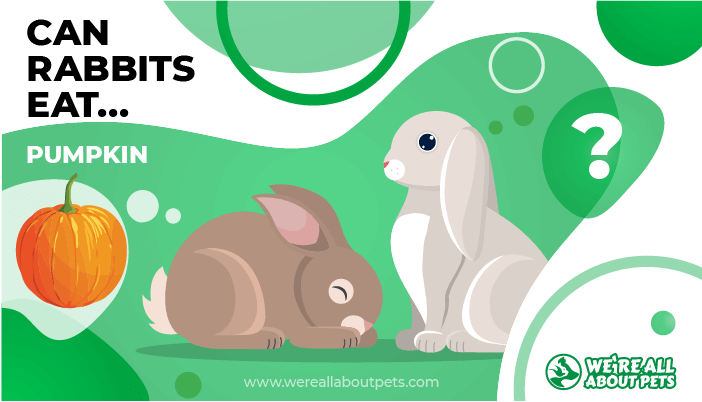
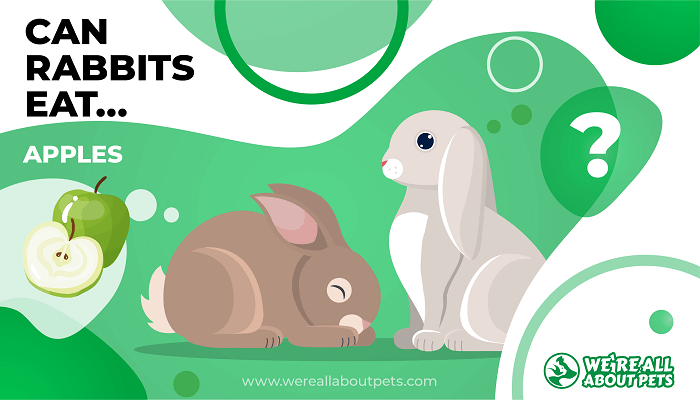
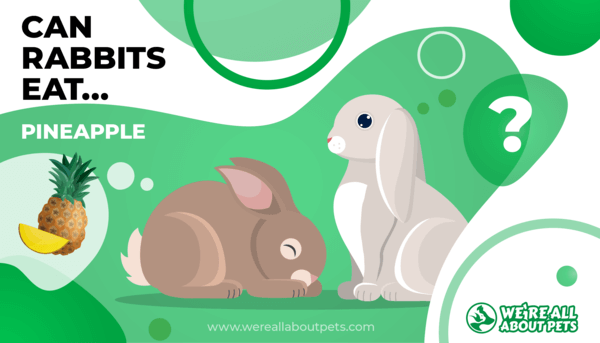
Oloyede Olusegun Olanrewaju
Please I wish to know if rabbit could eat dry grandnut shell and what are its health effects.
Kate Barrington
Thanks for the question! While peanuts (groundnuts) are generally considered healthy, they aren't a good option for rabbits. They are too high in fat and sugar, so may upset your rabbit's stomach!